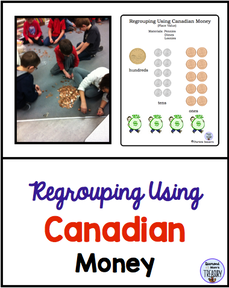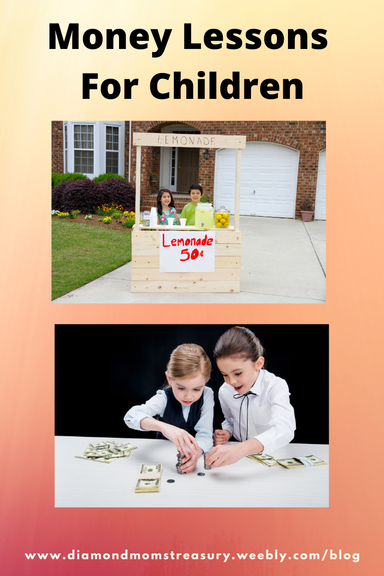|
Teaching children about money is not easy. Working with money is a difficult concept for most children to understand. It is even more challenging now as we don't handle cash as often any more. Most transactions are digital. Paying with cash and making change is not as commonplace and so children don't see it very often. However, it is still an important skill to teach and understand. Over the years, I have discovered that the more concrete, practical applications we can use for teaching about money, the more likely kids will understand and apply the skills in other areas. There are many different ways this can be done. Here are a few different examples. When teaching about regrouping in addition or subtraction, I often used the idea of going to the bank to change pennies into dimes and dimes into dollars for addition or the reverse for subtraction. I would also use play money to practice the concept. At Christmas time, the hamper fund would collect money for gifts for kids. My class did a money drive called Pennies for Presents. We would collect pennies and other coins. Then we would sort, count, and wrap the coins and keep a running tally of the money collected. We did this for 4 weeks. At the end of each week we announced how much we had collected. The money was then delivered to the hamper fund. You can find out more by checking out this blog post. Not only did this teach the children about doing something to help others, it also helped them to learn about how to count and tally money. When the penny was discontinued in Canada, we continued the drive, but we changed the title to Coins for Kids and we collected other coins. I always had lots of play money available in my classroom so the children could handle it and work with it for most activities. We would also do lots of role playing and practice buying and selling items. This helped with the concepts of making change and using different types of coins for payment. I also created several math activities and task cards for these concepts. There are also some that are digital versions for online or distance learning. You can check them out here. Word problems are difficult for children, so trying to add the money concept to them can be challenging. I decided to try to make them more relevant by using examples that would fit situations that children could relate to. This set of problems deals with ways children can earn or spend money in real life. One year, I decided to take things a little further. As handling money became less common, my students found it hard to understand that they couldn't buy whatever they wanted to with the plastic card that their parents used for payment. We began studying about money from that perspective and it led to a money unit and a huge fundraiser for a field trip. We created the unit together and it made a big impact on everyone. You can find out some more by checking out this blog post. I also wrote more about it here. There are many other ways that money can be taught, but I hope these ideas have help to give you some inspiration and additional ways to help kids understand how to use money. Related Posts
0 Comments
Leave a Reply. |
About Me Charlene Sequeira
I am a wife, mother of 4, grandmother of 9, and a retired primary and music teacher. I love working with kids and continue to volunteer at school and teach ukulele. Categories
All
|




















 RSS Feed
RSS Feed